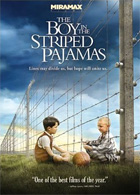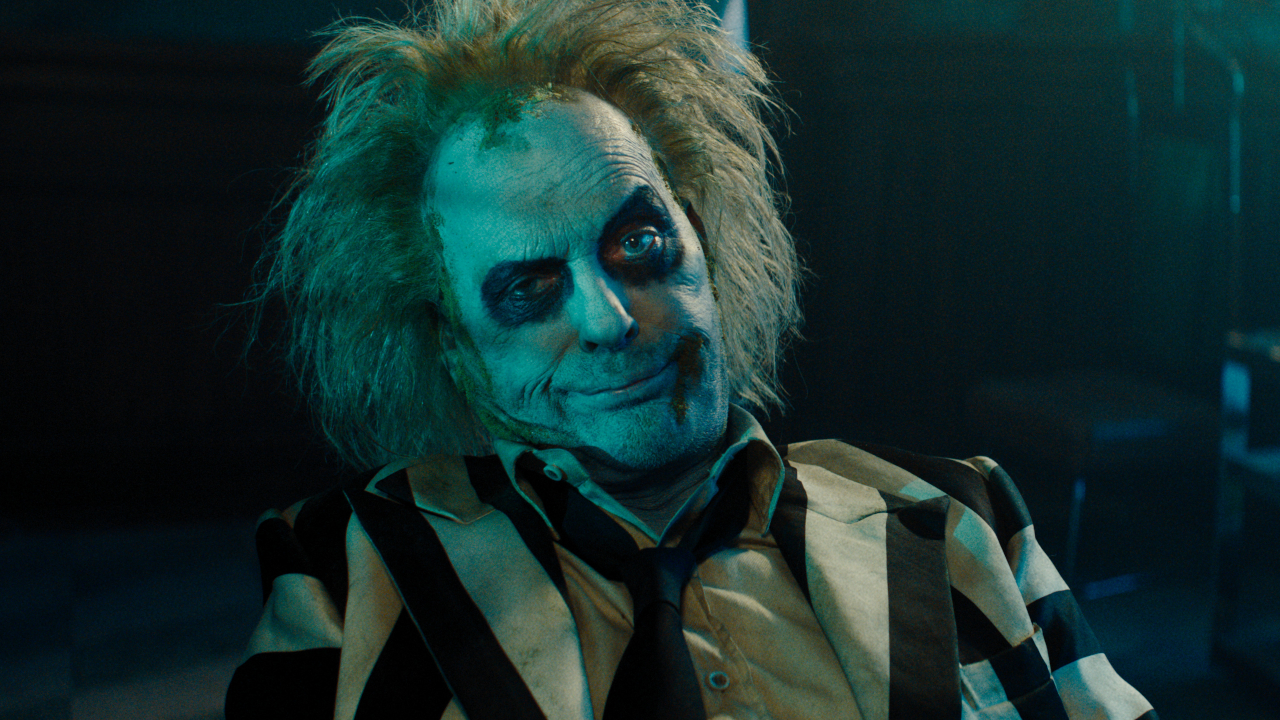Holocaust movies can be extremely tricky to pull off due to the excruciating heaviness of the topic at hand. Many Holocaust films have either gone the graphic, unpack-the-nastiness-of-it route (like The Pianist), while others have stuck to a subtler tactic by remaining poignantly emotional (like Life is Beautiful). The Boy in the Striped Pajamas manages to glide gracefully straight down the middle of these two approaches. Rather than break under the pressure of such a mammoth undertaking, the film flourishes under the spotlight of moral quandary. The result is nothing short of sheer beauty. Bruno (Asa Butterfield) is the eight year old protagonist of The Boy in the Striped Pajamas. After his father (David Thewlis), a Nazi Commander, gets promoted, the family must move to the country in order to be closer to a concentration camp that the he will run. Bruno is a small boy that lives his life completely unaware of the present political climate of his country; he reads fantasy books and loves to play make believe with his friends. In other words, he is a child in every sense of the word. After moving to the country, Bruno happens across a small boy that lives behind an electrified fence who wears “striped pajamas.” The boy is a prisoner at the concentration camp. The two become friends after Bruno starts bringing him food and conversations by the fence.
The Holocaust through the eyes of a child idea could have turned out extremely overwrought and borderline manipulative. Rather than exploiting the innocence of the small protagonist, The Boy in the Striped Pajamas uses said innocence to hinge its intriguing thesis upon. That thesis being: any person living during WWII who had an objective point of view on the Holocaust would deem it to be wrong. In a brilliant touch of dramatic irony, the audience knows exactly what is happening in his country, and we just wait for the understanding to unfold in Bruno’s mind. Once it does, and he is wildly appalled, we understand the value of seeing the Holocaust through the perspective of an eight year old.
After hearing his tutor explain that the “Jewish Man” is responsible for all the evils in the world, Bruno responds “There is such a thing as a nice Jew, right?” breaking our hearts and igniting our vehemence all at once. The moral quandary of the film unfolds with Bruno in the eye of the storm. Although Bruno is left crying and confused during much of the middle of the film, Butterfield plays the part with such a quiet grace and fortitude that we believe he can handle even the largest of unfortunate revelations.
The film, itself, is stunningly beautiful. It begins in a lavish mansion in the city of Berlin, just as a decadent party in honor of Bruno’s father is about to begin. The colors are all soft, and it in Bruno’s life that we are completely safe from the horrific ugliness of the war. Rather than follow the happenings of the war, we follow Bruno’s journey, and it is a beautiful one. On many occasions director Mark Herman chooses the path of delicate detail, over morbid image. Rather than force the image of their limping Jewish servant being severely hurt or killed, we watch as the servant wraps Bruno’s knee in bandage after he falls off of his tire swing. It is in this way that Herman builds a level of real emotional attachment to victims of the Holocaust, by showing us their humanity, not their lifeless bodies.
It is not until the very end of the film that Herman exposes us to the inside of the concentration camp. We have watched the title character, the small boy that Bruno befriends (Jack Scanlon) get dirtier, weaker and more bloodied throughout the film, but we do not see behind the electric fence until the plot takes us there. My only major issue with this film is the ending, which is, simply, incongruous with the plot arc of the film. Although I thoroughly appreciate the frenzy of energy behind the story's ending, and I understand the point Herman is trying to make with it, I do not find it complementary to the film. It is done in an extremely tasteful manner, just like the rest of the film, but it isn't altogether necessary to drive home the point. One can not unravel the ending from a movie this controversial, so I will acknowledge that I love this film, issues and all. I highly recommend it, even if you typically shy away from Holocaust films. Anyone can enjoy the softened beauty of The Boy in the Striped Pajamas. It is a touching story about true innocence.
The special features of the film are not vast, but they are thought provoking and complete. They consist of one making of featurette, called “Friendship Beyond the Fence,” five deleted scenes that can be watched with or without commentary from the director and the author of the book, and a feature commentary with the director and the author of the book. It was not until I started watching the special features that I started to get extremely emotional. Watching the special features of a film that one finds truly exception is always an emotional experience, but when the subject of the film is so powerful, it is that much more loaded to get a peek behind the scenes.
The featurette is fairly standard information, but again, the material is so potent that each description of a scene becomes highly loaded. We get an adorable joint interview with Butterfield and Scanlon in which they describe to us what their characters are about and how they were able to play them. Of course, the language is fairly childish, as they are both boys of under ten, but that doesn’t make it any less meaningless; only more cute.
The five deleted scenes are all just about as beautiful as the rest of the movie. What is interesting is that it is obvious that the scenes were all clipped in honor of the subtlety that pervades the film. There is one deleted scene that was meant to be at the very beginning of the film in which some of Bruno’s friends loudly mock a Jewish man. Herman explains in the commentary that this scene was cut to protect the naïve nature of Bruno’s lack of knowledge. It was thought that, if Bruno’s friends knew about the Holocaust, it would raise questions about why he didn’t. Each of the deleted scenes show a higher resonation of scenes that basically already exist in the film. The scene in which Bruno first sees the concentration camp from afar was originally about ten minutes long, but is clipped down to about two minutes in the final cut of the film. Unfortunately, Herman and author John Boyne don’t have very much time to unpack every aspect of the deleted scenes, but they get their chance in the audio commentary.
The audio commentary over the film by Herman (who not only directed the film but adapted the screenplay as well) and Boyne is a little bit awkward for everyone. You see, it is the author of the original material and the man who adapted his piece of fiction. The two butt heads a bit, but, in the end truly complement one another’s perspective. There are a few times when Herman can’t remember a scene is in the book, which is appalling and, again, awkward. Overall, the audio commentary is quite boring, even with it’s uncomfortable touches. Yes, it is interesting to hear the two squabble over which scene was in the book and in what form it was in the book, but I’m sure it would have been much more interesting had I read the book.
I Didn't Like Beetlejuice Beetlejuice, But Here's Why I'm Open For The Proposed Third Movie
First Look At Visions Volume 3 Panel Announces Release Date And Anime Spinoff At Star Wars Celebration Japan 2025 - Live Blog
Will Smith Reveals What He Learned While Working With Fresh Prince Co-Star Alfonso Ribeiro, And This Is A Great Lesson











